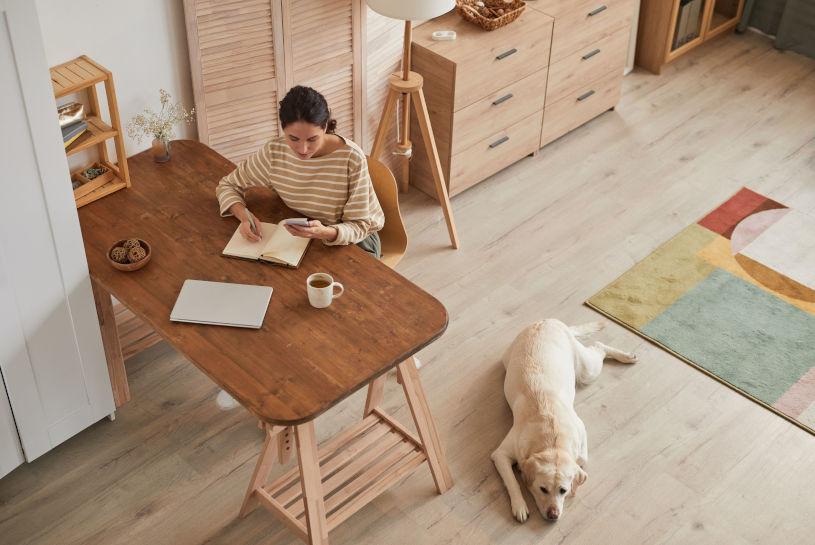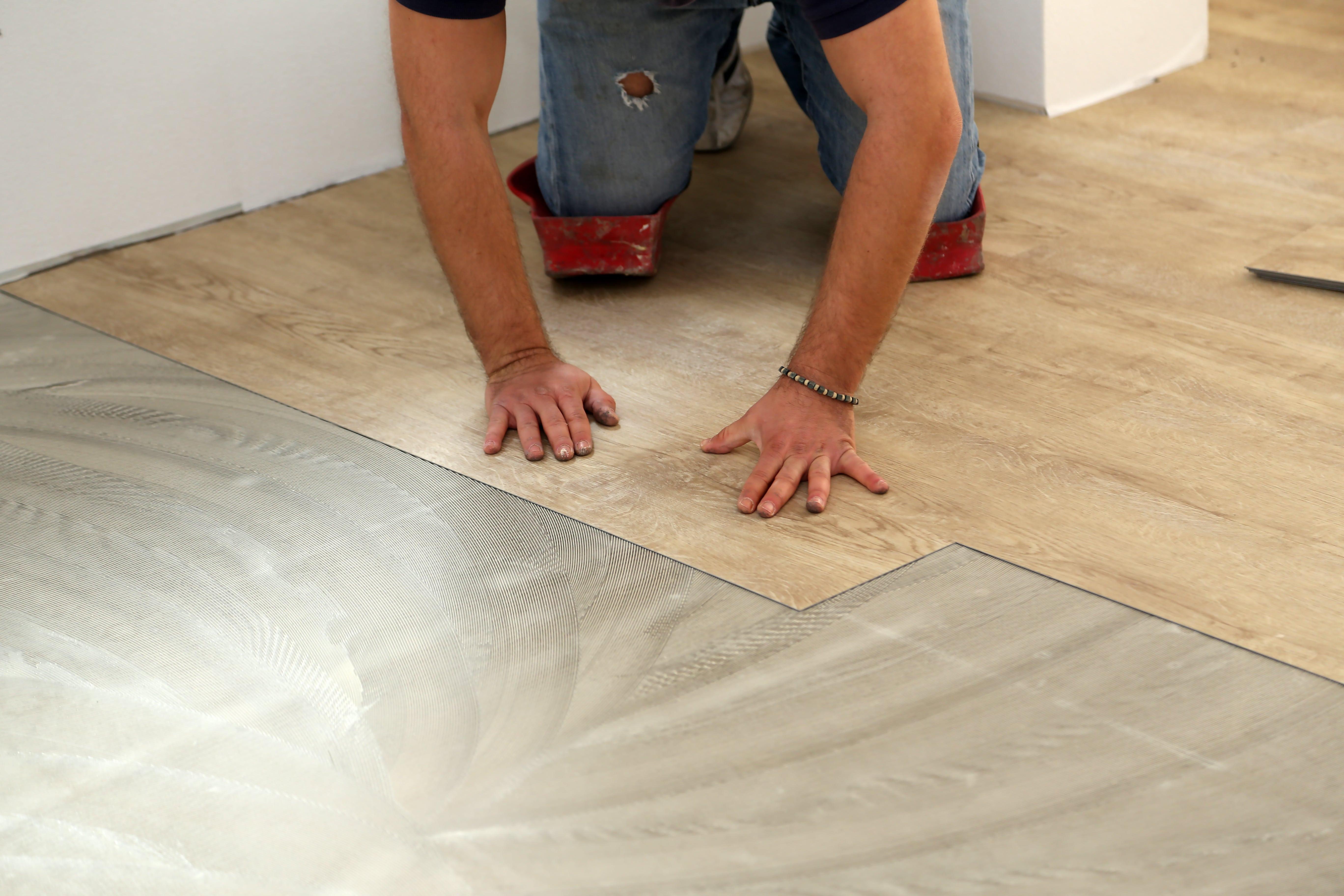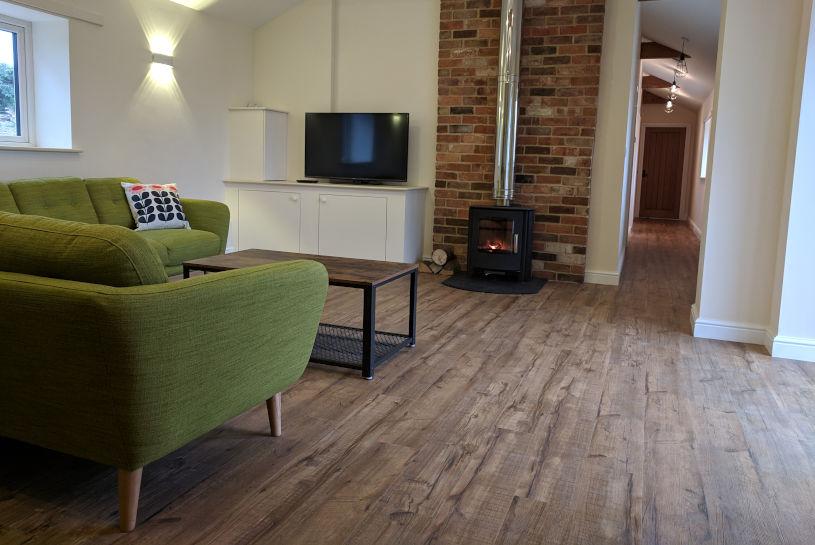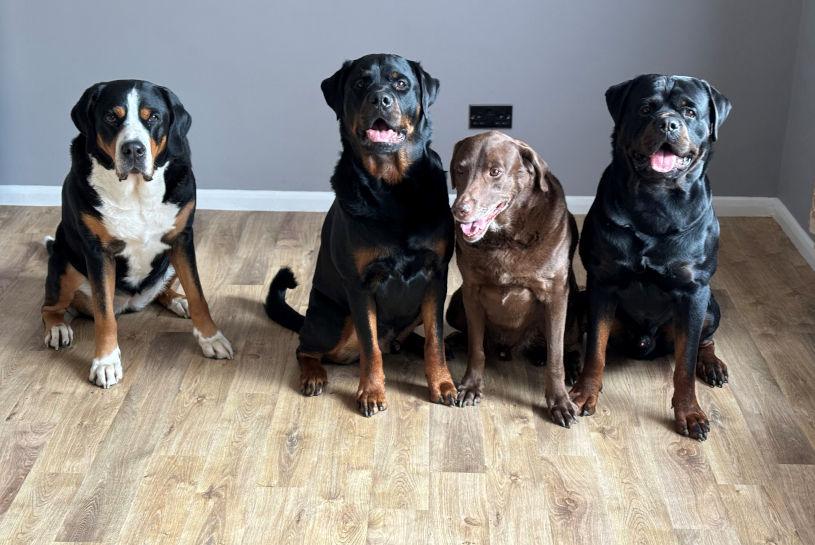At Floors for Paws, we know that our customers all want the best for their pets but when it comes to our homes, what is the best flooring for dogs? Here, we look at which flooring is good for our four legged friends.
When it comes to our homes, we are spoiled for choice – do we want carpet, or ceramic tiles, or laminate or vinyl? But which of these is good flooring for dogs and are we confusing Pet-proof or pet-friendly and what’s the difference?
Ceramic tiles
Arguably a fine-looking flooring solution and practical in terms of maintenance and cleaning, ceramic tiles are cold underfoot and underpaw. Unyielding too, ceramic tiles are hard and uncomfortable to lie on and will cause pain in older, arthritic joints. The smooth finish of ceramic tiles also represents a huge slip hazard to dogs and humans. For young, gangly pups trying to find their feet, and senior dogs trying to maintain their stability, ceramic tiles are hard to navigate safely and pose a serious risk to our pets.
Laminate flooring and solid wood floors
Representing a comparable slip hazard to ceramic tiles for our pets, solid wood floors and laminate flooring have a further disadvantage for pet owners – their reaction to liquid spills. The wood content in laminate floors (its core consists of compressed wood fibres) means it can never be classed as waterproof and, when exposed to excess liquids, will buckle and warp. Similarly, solid wood floors can cause slips and are uncomfortable, and can become seriously discoloured through continuous exposure to moisture.
Carpet
Carpet is lovely for our pets – it’s comfortable to lie on and warm – and nothing beats the feel of a deep pile carpet underfoot for us. Sadly though, we rarely walk barefoot outdoors, unlike our pets, and transfer from their paws can include dirt, mites, pollen and much worse! This unwelcome matter gathers in the carpet pile and can be difficult to clean away effectively. Add to this the sponge effect of carpet when it comes into contact with liquid (think toilet training pups and incontinent senior dogs) and you can see that while carpet is a kind solution to pets, it is not ideal for pet owners.
So, does the elusive solution exist that is not only a dog friendly flooring but that will tick all the boxes for pet owners? At Floors for Paws, we believe it does!
Luxury vinyl flooring from Floor for Paws
At Floors for Paws, we offer three ranges of vinyl flooring, which are all pet friendly and which will keep pet owners very happy too!
The Pawsafe ranges from Floors for Paws
Developed in conjunction with Canine Arthritis Management (CAM), our Pawsafe Domestic range is ideal for any room in the house. Offered as planks or tiles, the range comes in both wood- and stone-effect finishes in a wide choice of colourways. The textured surface layer makes this the best non-slip flooring for dogs as it has the highest slip rating of any vinyl flooring in today’s market and a comfort layer means that older dogs will be able to lie down on it comfortably. Pet owners love this range too as it is scratch resistant, waterproof and easy to maintain, while its great aesthetic will suit any interior.
The Pawsafe Commercial range from Floors for Paws has also been developed alongside the expert veterinarians at CAM. With the same brilliant features and benefits of the Pawsafe Domestic range, the Pawsafe Commercial range is offered as sheet vinyl on the roll. With hardly any joins, depending on the area to be covered, this is a completely waterproof flooring that is hardwearing enough to cope with the high traffic of commercial premises.
Luxury vinyl flooring from Floors for Paws
Our luxury vinyl range offers pet owners a wide choice between wood-effect finishes (great for creating traditional herringbone designs) and a stone-effect look (great for those who want the aesthetic of a ceramic floor).
To find out more about the best flooring for dogs (and their owners!), get in touch with our friendly team by email at info@floorsforpaws.com or by phone on 01522 300218.





